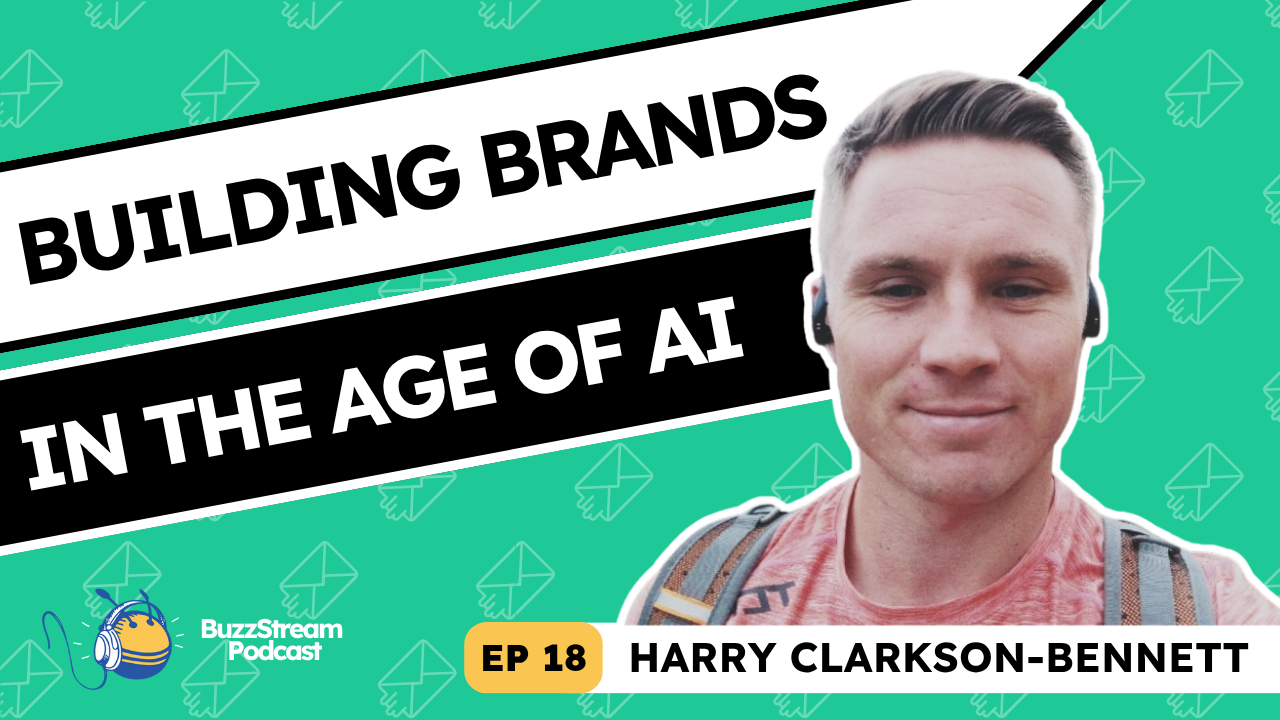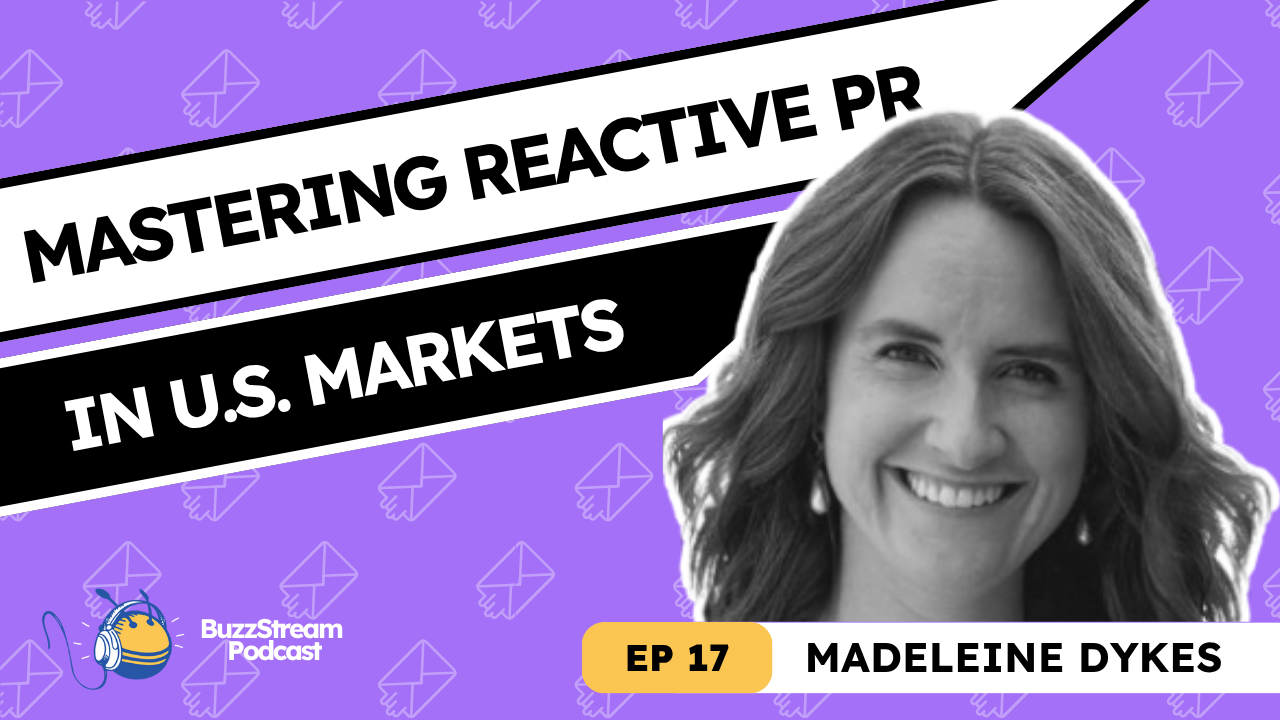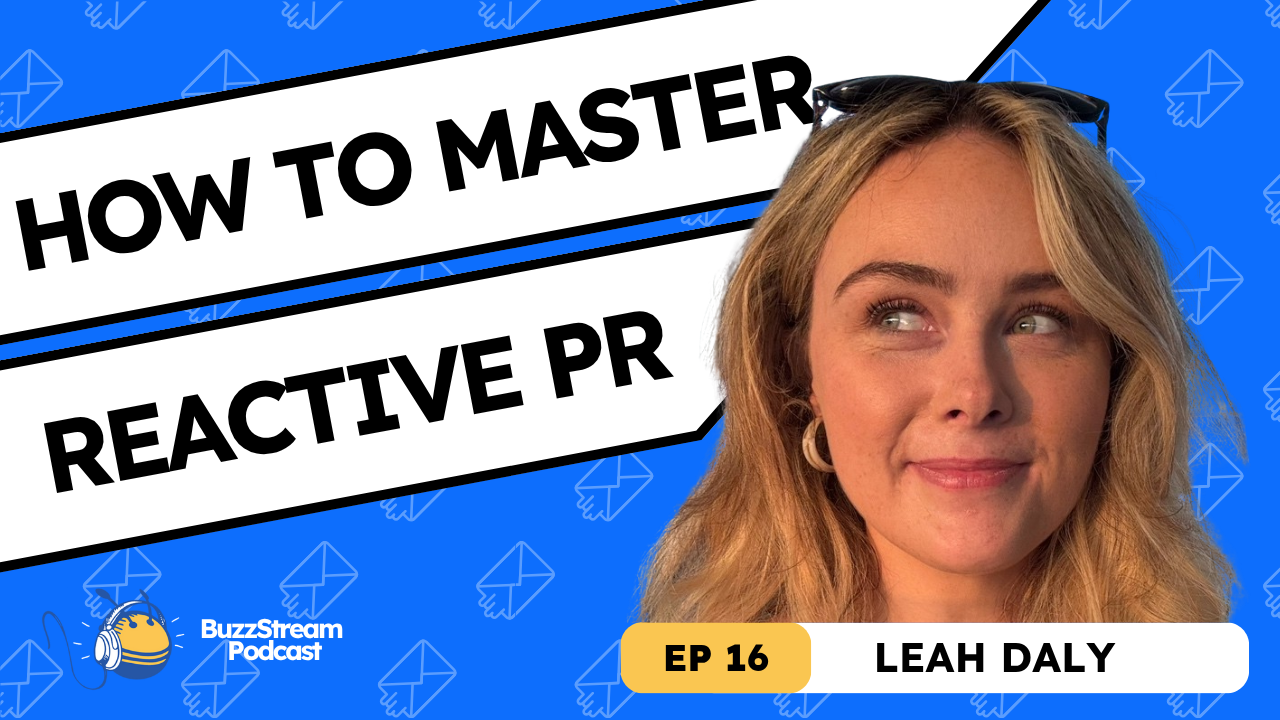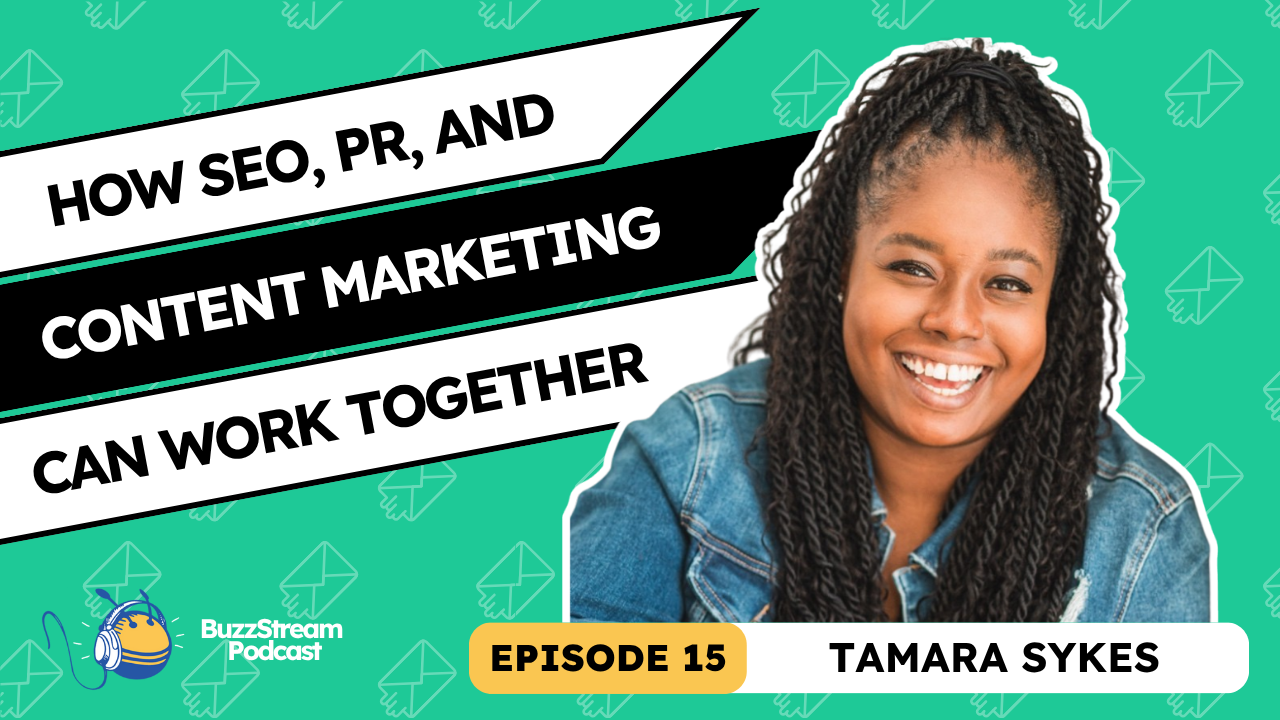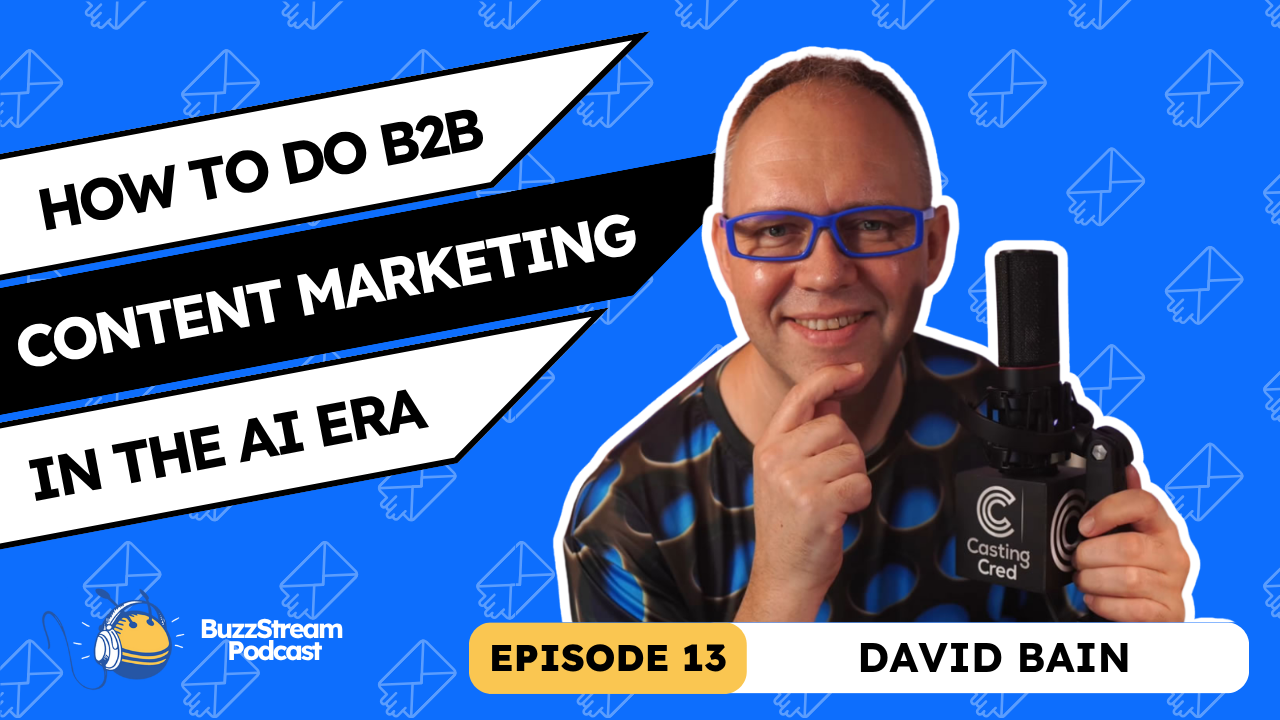Table of Contents
If you’ve followed my writing lately, you’ll know that I think the US digital PR space still has lots of untapped potential in local news.
So, I contacted Collin Czarnecki, a former local journalist who now owns Noble, a digital PR and content strategy agency based in the US.
Collin graciously shared his tips and tricks for pitching to local news.
If you pitch anything in the US, this is a MUST-WATCH.
- Use data to act like an extension of the newsroom — saving journalists time makes you valuable.
- Lead times vary — pitch local newsrooms close to the event and nationals well in advance.
- Try to find a timely hook for each pitch.
- Freelancers need more complete ideas and longer lead times because they have to pitch editors too.
- Tailor your pitch for the medium — TV, radio, and national news all require different approaches.
- Pitch lower-level contacts first — reporters and producers are better targets than editors for most stories.
- Constantly refresh your media lists — local journalists change beats and cities often.
- Spend more time finding the right journalist than writing the perfect pitch.

Can you tell me a little bit about the start of your journalism career?
Collin: Sure. Yeah. I’d always really had an interest in journalism even before, going into college. I actually originally wanted to be a foreign correspondent, which is funny how life took me from wanting to be a foreign correspondent to working from home.
So that’s a little, that there was a bit of a fork that had took me in another direction with that. But, yeah, I just always had an interest in that, just telling stories. Even when I was a kid I liked to put together like short comic stories, like comic books.
So just always had an interest in just telling stories and writing. But yeah, I got into, to journalism. Journalism. My very first print job at a print newspaper right outta college was also in Florida. And that was just a big, learning lesson. Just getting my feet wet, willing to cover anything and everything from school board meetings, city commission meetings, the really like dry dry stuff.
But it’s a good education and civics and even in a better example of how to take, create a story out of it. Seemingly pretty boring topic, yeah. That’s that comes out of like planning commission meetings where they’re talking about, replacing a strip of sidewalk.
You gotta make it interesting for for your audience. But yeah, as you mentioned, after that, I. I worked@patch.com. Still, by far the best job I’ve ever had. Just a really great experiment like 15 years ago or so when Patch first launched, digital only, they had about a thousand sites across the country with editors embedded in those communities, telling stories, living there, reporting on the news.
So yeah, it was just a lot of autonomy with being an editor. At a patch site, we were creating about four to five pieces of content every day. So it was just. High volume of content, but just learning to see what was connecting with the audience and what was engaging. So I got my start in SEO with that too, with patch.com and yeah.
Then on the other side of that, after Patch went into a legacy publisher, Gannett part of USA Today Network. So that was a whole other experience to see. How that legacy side of publishing works versus digital only, like Patch.com. Yeah.
Vince: Yeah. I have so many questions and I think a lot of our talk today is gonna go into kind of the structure of these new sites and pitching.
But tell me too so why did you end up starting the agency? Was it just you wanted a change?
What led you to eventually start your own agency?
Collin: I shifted from journalism after Gannett. It was my first attempt at starting a business. I launched a hyperlocal news site in Nashville, and that’s actually where the name Noble originated.
It was Noble Nashville, and it was in the same vein as Eater.com. Oh, cool. Hyperlocal focused on the core demographic, which was millennials at the time. Nashville was really exploding with a lot of people moving to the area, so trying to attract that audience with things to do, lifestyle, restaurants, and that kind of content.
But as I found out, it was very difficult to monetize that in a sustainable way, which is part of the bigger story of where we’re at right now with the whole news landscape. But yeah, and then after that, I got into digital PR. I was a director at an agency.
So worked in, got my start in digital PR there and worked for about five years at that agency and then decided to to launch Noble about two and a half years ago. So that was the. Long, long journey to get to to get to Noble. Yeah.
Vince: Yeah. That’s awesome. One of the things I like to ask people who have done that switch is how your journalism background has helped your work in agency.
I feel like there’s always good stuff you could pull out of that. So I’d love to hear your thoughts there.
How has your journalism background helped your agency work?
Collin: Yeah, definitely. I think great examples go back to most digital PRs that I’ve worked with and most that I follow on LinkedIn and follow their work closely. Having that natural instinct of being inquisitive is the baseline for digital pr.
You’ve got to be curious about whether you’re a journalist, the people you meet, and the stories that you’re trying to tell. Or whether you’re a digital PR with your client, what types of stories can we get out of a client, a unique brand? Really explore all the ins and outs of a client.
I think the onboarding processes are super important, but more so, it’s important to have that inquisitive nature within you. And then, on top of that, storytelling—that’s really what it all boils down to with digital PR. Sure, it is an SEO strategy, but at the end of the day, if you don’t have a good story to tell, no one’s going to care.
The people you’re pitching will not care.
The brand’s audience isn’t going to care.
So yeah, it’s really about finding that story that is going to resonate with both the brand’s audience and a journalist in the news media.
Vince: Yeah I’m gonna come back to that because it’s something you said earlier, right?
The, like boring industries the local hyper-local stuff and how important it’s to tie into those. But before we do that, I wanna get your take gut check, my inclination is that like local news sites in the US. At least to me, it appears to be an untapped market or an underutilized market for link builders, digital PRs, whatever you wanna call ’em in the US.
Do you agree?
Do you agree that local news sites are an untapped market for link builders and digital PRs?
Collin: Yeah. We’ve seen this huge, media landscape transition going back probably more than 20 years, really since the start of the internet, you start seeing this decline of, print subscribers and how can we monetize our audience digitally.
I think being able to tap into local news specifically and having a local angle within your campaign will maximize your ability to pitch to those different outlets—whether it’s a rankings piece, some type of city index, or even an analysis of an existing government data set that you can basically serve up to a local newsroom that might not have the resources or the time to dig into that and put that together.
Because we’ve seen this huge change in media landscape with consolidations and buyouts and layoffs.
If you can act as an extension to a newsroom, that’s definitely our strategy.
And I post that frequently on LinkedIn saying that we have a newsroom mentality.
So every piece that we go into, it’s first and foremost, okay, who is going to care about this story?
What newsroom? Whether it’s local or national or even tv, local TV news, why are they gonna care about this?
So I think, yeah, it’s definitely having that mindset.
Can unlock a lot of potential for digital prs if they are pitching locally, to have that local angle within their data.
Vince: Yeah, this strikes me as such a scalable approach for any of these sites that have location-based services. So like from the rental companies, like the b the BBOs of the world, or, rent car rentals or, all that kind of stuff to, yeah. Any I remember working in agency and I still do, freelance work.
Like people would say, we’re thinking of getting into whatever city, expanding this into whatever city, and that’s the first place my mind goes to. But one of the things you said stuck out, just the idea of finding local data sets and telling a story with that data to the journalist. That sounds like the key for a lot of people, right?
How can digital PRs use data to help local news sites tell better stories?
Collin: Even being in local newsrooms, resources, staff is stretched thin. You might be pulled away to a breaking story, and you might have this idea to say, oh, I’d really like to dig into census data about my city or employment data. What types of trends can we identify? And sometimes that takes.
From a journalist perspective, there is so much time that they don’t have to cover that because they could be pulled away to a breaking story. So, being that extension to a newsroom and being able to be a digital PR means having that time to dig into those types of data sets and really just serve that story up to a journalist.
It has. The local angle, it’s backed by really good data. If it’s a government data set or maybe even pulling a FO request. There’s a lot of different ways you could tell a local story, but yeah, being able to do that can really benefit, obviously you and your client, but the journalist as well, and could create a long-term relationship where, there’s been times where it’s oh, this is great.
Do you have anything else coming down the line that’s similar that you could pitch us? Yeah.
Vince: Yeah. So many directions we could take this, but one of the things you said was the FOIA request. I feel like that’s something that I didn’t realize was a thing in the us I. I’d heard more about it in UK talking to the UK journalists, and I only just used it this year for the first time.
But I think something I was talking with you about trying to look at like these local, trying to track journalists losing jobs and over time I’m trying to get. Some type of data from BLS or Census Bureau, and I put one out for the BLS. They got back to me in a few days. Unfortunately, they weren’t able to give me anything, but like they answered it.
I was very surprised. I was expecting this to take weeks and it to not, or not show up at all, but they gave a great answer. So yeah. I would like to hear your thoughts on the Freedom of Information Act for people that don’t know what we’re talking about.
Do you use FOIA requests in the US?
Collin: Yeah, definitely. I think it’s another.
Like you just mentioned, another type of data source that you can rely on or use, especially for a local based story. You could, you could do for requests on the. The national level too, which, could be hit or miss, with, in terms of timing of how long that agency might take to get back to your request.
But yeah, even in my experience, working at Patch, we had pretty good access to, we would cover crime. A lot. Those were like our highest engagement stories. Local climb, the weekly roundup of police reports. And sometimes there would be stories within those police reports that you want to dig deeper into.
So at least on my experience from a journalist on a local level, it was a little more difficult in terms of the turnaround time to get that. And it might, it might be because. Some cities might have limited staff or resources to, to answer all of those requests, but they will eventually, get back to you with some type of response.
That’s another, I. Tapping back into digital pr, like the art of the follow up with a four request, is important too. But yeah, it is a really great source. Especially if you want to dig deeper, like you were just mentioning about. Maybe a very specific data set within a larger data set, whether it’s, employment data or income.
There could be like endless types of stories to pull from that, just digging a little deeper with a forward request. Yeah.
Vince: Yeah. Now you also said something in there that I made a note about. So it’s like this, the idea of a turnaround time, right? Like you probably have this innate sense now of.
When you’re creating content, here’s how early I need to get this in front of a journalist to hit, if it’s a Super Bowl, just using some broad thing. I know, if I’m pitching local, these people are gonna be pretty slammed. So I gotta get at least two weeks ahead of time, whereas not whatever.
But can you speak a little bit to those lead times, especially in local news sites and it, if they differ at all from the nationals?
Can you speak about lead times for local news sites versus national?
Collin: Yeah. Especially if you can time it or tie it to a timely angle that is gonna help you in the sense of almost creating urgency around your pitch.
Not only is this important because it mentions your city and has great data about it, but it’s also a timely angle that’s very newsworthy.
So if you have two or three of those elements, that is really going to help your pitch land, or at least have a journalist get their eyeballs on it and potentially run it.
So yeah, I always try, even though it is hard, especially depending on the brand you might be working with your client, obviously, on their end, might have different levels of approval process that the idea has to go through, which could potentially hinder how long it takes to get your campaign done.
So first and foremost, going in with that mindset, okay, how long is the approval process take on the client’s end?
So once you have a good sense of that, you can time the idea. Okay? Oh, we know that this client might take a little longer, but this will line up really nicely with the Super Bowl or with summer travel coming up.
So I always, I always try to have some sort of timely angle with that.
If we can’t do a reactive piece about something that’s happening right now, timing it with a holiday or something seasonal is really going to help your campaign land, especially if you’re pitching local, too.
Yeah.
Vince: Yeah, I love that. Just put that in the ideation kind of equation, when you’re coming up with an idea, what’s the local angle? What’s the timely angle?
I feel like those two, if you could check those two boxes you’re g gonna do pretty well when it comes to at least finding angles to pitch.
Collin: Yeah, definitely. And even getting more granular with, the timing of your pitch.
Let’s say there was a Super Bowl idea that you were trying to pitch out. When it’s a local newsroom, I try not to pitch too far out in advance because local tends to just move so quickly.
A breaking story could happen today or later this week. There’s a severe thunderstorm.
Things are moving so quickly in a local newsroom where I try not to have that long lead time.
Which might be better served for a national publication or more of a features writer who’s fleshing out a bigger story and saying, oh, I could use that data point on, this overall trend in, in the workplace versus, a very timely topic that when you’re pitching a local newsroom, is more likely gonna hit when it’s getting closer to that date, if that makes sense.
Vince: Yeah, for sure.
The thing that stood out to me, too, was the idea of a features writer versus someone who’s looking for breaking news or a timely news story.
We talk about this a lot in-house and how this ties into how digital PR overlaps with SEO and the idea that like, say you have a piece that you want to pitch, you’re looking at backlinks that a similar post might have gotten and what you end up coming across a lot of times is like journalists who will organically mention a study done by, maybe it was your competitor.
Some, will go to that thinking, okay, I can pitch this journalist when realistically to me unless that story is solely about that study, I feel like it’s a way less likely that this journalist is going to be open to my pitch.
When you said the difference between a features journalist and someone who is looking for timely news, that kind of just clicked for me.
Is that how you think about it? Am I tracking that correctly, at least in the newsroom?
What’s the difference between pitching freelancers vs staff writers?
Collin: One topic or coverage area that comes to mind with this is health and beauty writers.
They might not write for Cosmo all the time, but they might have a longer lead time for stories, especially if you’re pitching a freelancer.
Let’s say there’s a freelancer who writes for Cosmo who is not an in-house staff journalist but frequently writes for Cosmo.
And you have to keep in mind too that there’s another step of the pitching process because you’re pitching them.
Then they have to shop the story around, so it’s like another layer of pitching where I think that’s a great example of that extra lead time that you need to buffer in with those types of writers.
Whether they write for health and beauty or even workplace writers that might write more about like overall workplace trends, now the kind of the shift of going return to office, taking a step back and let’s look at this bigger trend as opposed to something that’s happening right now immediately.
I always try to buffer more time when pitching to freelancers or when pitching to.
Specific verticals, like health, beauty, things like that. Yeah,
Vince:. Interesting. Yeah, I like that note about the freelancers as well. That’s a great point. Theypitch their editors or they have to pitch their story as well. I was talking to a UK journalist on the podcast, and she was talking about that, where I have to be just as good at pitching it as you guys do.
Collin: Yeah. Yeah. It’s, and it’s so interesting too, relaying that to clients sometimes, where you’ve gotta sometimes educate the process involved with that too, where you’re saying for this particular story, there might be longer lead time because it lends itself more to pitching, those freelance writers.
So that, yeah, that’s a whole other sort of conversation, education process to have with clients too. Yeah. About those types of stories. Yeah.
Vince: Would, and would you say on average, like the freelance writers are the ones who are not looking for that breaking news, right? They’re looking for more of the story, like the larger trend story around certain topics.
I’m just trying to think of trying to make this real for someone who has a, say a city index study, they want to pitch to, a Nashville pub or something like.
Should I look for the person covering the local Nashville News, or should I look for the person writing about trends around Tennessee? Where do you draw that line?
Who do I pitch to at a local news site?
Collin: Yeah, if I have a campaign that is an index or some sort of city-based like data within it, first and foremost, I definitely go directly to Nashville would be a great, great example.
They have basically one major daily newspaper, which is where I work the Tennessean.
And then from there, look at any local TV stations in that area.
So primarily if it’s a big city, it’s gonna at least have an N-B-C, C-B-S, A-B-C, Fox affiliate maybe a CW you might find.
But but those are, the big four that are pretty much gonna be in, in every city.
So I start with a print or digital newspaper, then a TV affiliate within that city.
Maybe even in the surrounding areas, like Pittsburgh, there are some sort of smaller outlying cities outside of Pittsburgh that might have interest in the Pittsburgh market, but I always start first with those core stations and core newspapers within those cities.
And then from there, it’s like another step: Let’s say it’s sports-related. I’m only going to pitch sports writers within those markets and those cities rather than just sending it across the entire newsroom and hoping someone’s interested in it.
There are a few more granular steps with the local pitching, but if you get it into the right inbox, it’ll just increase your chances of getting it covered.
Vince: Yeah. You mentioned that the way it’s typically broken down is that there’s probably going to be some type of local representation, such as an online newspaper.
And it also could be TV stations, the NBCs Fox, C-B-S, A-B-C.
So yeah, when you break it down like that, it seems pretty simple, right?
But I guess then you get into these areas where it’s okay, what if there isn’t? What if there isn’t coverage? Do you go to the radio?
I think that’s big, right? In the us. Are there other options outside of those three?
Do you pitch to radio sites?
Collin: Yeah, radio too. It’s really interesting too, of just the consolidation and, I’m sure people have seen that map of just how few companies own basically news publishers, whether it’s digital print or TV, local TV broadcast.
It’s really a kind of a small list of companies that own all of those.
Yeah, looking at those and then in terms of radio, really, iHeart is definitely a big one.
They have they have, obviously like stations in pretty much every country or every city across the country.
So that’s another, another option to look into. I. iHeart can be a good source to have stories syndicated, especially if they have one.
Maybe in your index ranking you have several cities that also are part of the iHeart network or whatever they have an HeartRadio station so they can look at it and say, oh, we could run this in Nashville, Chicago, Detroit, where we have stations.
So there’s oftentimes where that has potential to syndicate even through radio and iHeart, too. A
lot of their, because it’s part of that iHeart network, the domain authorities really I believe it’s in the like, low nineties.
Yeah, so that, that can be a great.
A lot of people won’t, maybe, won’t think of radio because they associate it with actual audio.
But they have digital components, online components to iHeart and other stations.
So yeah, that’s another great option to pitch.
And then, there are still Patch sites throughout the country. There’s Axios.com, which has a local arm in, I wanna say, at least a couple dozen cities right now.
And then some newer ones. I’ve seen one called 6:00 AM City, which is in a few cities across the country.
If you dig close enough, you can find those, maybe secondary-tier local news sites.
Vince: On the one hand, a local news site that doesn’t have a lot of coverage options, or sorry, like a city that doesn’t have a lot of co coverage options may seem more appealing in that they don’t have a lot to write about.
At least, that’s the digital PR mindset.
The SEO mindset with a lot of these, like city studies, is that you’re leaning on the fact that you are featuring this city your city is, it was named the best, whatever, walkable city.
But on the flip side of that, they might be inundated with requests.
They might not have a huge newsroom, they might not have a lot of journalists being able to cover the news that’s happening.
So a day might be covered by a major thunderstorm and a, whatever, a car crash or, some something’s blocking the highway.
Do you find that? Is the glass half empty or half full?
Collin: Yeah. I’m not giving a non-answer, but I feel like it’s just at the halfway mark where it could really go either way with what we were mentioning earlier about the continuously changing media landscape.
You have media I think they said last year, on average, about two and a half newspapers were lost per week.
And granted, not all of those have a digital side to it, but, it’s still, it’s part of that bigger story of the consolidation of local news and how that could either be, a negative for digital PRs in the sense that those local news sites, inboxes are getting more and more crowded, within with pitches.
But then on the plus side, going back to what we said is that you can be an extension of their newsroom if you’ve got that really great pitch that hits all the right notes.
A lot of times, when I pitch locally, I know there’s hesitation with writing long pitches, and which I don’t, we don’t do a full-blown traditional one-page press release, but I try my best to write it in the style of a news story specifically for a local news site because.
I feel it increases the chances if a journalist is in that local newsroom where it’s short-staffed and thinly resourced.
They have a great pitch, and I could pretty much just pull this off, and I don’t really have to make a lot of changes to this pitch. This is a great lead with a good hook with the data.
It’s timely. I lean on that a lot with local pitches. Just almost the pitch is. A condensed story version of the news story itself, and I feel like that helps. Yeah.
Vince: Yeah. A hundred percent. The, one of our first guests, Hannah Smith, who’s a great digital PR in the UK, she had mentioned to me this kind of practice that she teaches a course in, one of the practices she has for herself in this is, can you write go through your email and see if you can write a, an article based off of the information you’re giving the journalist.
I think that’s great. You might not have to do it, but it’s like having a good mindset when pitching this.
It’s not like when I first started, I tend to just give the eye-catching stats, where it’s enough to entice you to click into the post.
But since then, I’ve been leaning more towards “Hey, they don’t have time to do this.” Maybe it worked better six or seven years ago when I was really doing this all the time.
But it seems like they’re very, they don’t have as much time these days. The journalists.
Collin: Yeah, even local TV news that is, it’s almost a, I don’t know, a weird I don’t want to call it a game, but I, when I’m writing, I’ll pitch, especially specifically for local TV news. I read it in the voice of a news anchor.
Can I envision this? Yeah. So you put on your anchor voice, and if you have to read it out loud when you’re here in the morning I have I have a streaming app that basically has local Fox affiliates for pretty much every major city like LA, Dallas, and I’ll just have in the background because it just, it’s a good sort of training to know not only what they’re talking about, but how they’re talking about it.
Yeah. And how you can incorporate that your pitch..
Vince: Yeah. What are they leaning into from the story? Yeah. That’s great. This kind of brings up a good point. You mentioned pitching TV. How does your, if at all, how does your pitch process change based off of pitching local versus national or like radio versus TV?
I’m curious about the intricacies of some of that.
How should pitching change when pitching TV vs radio vs national news?
Collin: Yeah, even basically what, similar to what we were just talking about in terms of how your pitch looks and how that differs from, maybe pitching local to a national for national pitching.
I lean more on those bullet points, those quick, rather than trying to write a story in the pitch, I’ve got a hook and then some key data points because I feel that with national writers, it’s more of a “I don’t want to guide them specifically to think of this story in one way.”
I want to guide them to think of “here’s the data, and how could that journal supply it to maybe several different angles,” rather than, yeah, really trying to chisel it down.
I give them, just the facts and here’s why it’s timely and they can do with it and cover it how they. How they see fit,
Vince: yeah. And that, I just had an aha moment too, thinking, when you compare the US to the UK, I think a lot of the UK PRs that I speak to have that mindset of give them everything, give the journalists everything they need.
Because in the UK, most of the areas are very similar to local news.
In the US, it’s hyper-localized, and they probably don’t have a ton of time. Everything’s moved quickly. The journalists are getting laid off. It almost feels like a microcosm of the US local, states versus nationals, and national pubs.
Collin, tell me a little bit more about the idea of a network site like Patch. And, like a local the local Tennessee site, like a local Memphis site or something. Yeah. How does it work? How’s it structured? How do you change in pitching, anything like that?
How should you pitch a local news network site like Patch?
Collin: Yeah. I think that’s another really important topic too, just the structure and the hierarchy of local newsrooms, whether it’s a digital only like patch or a legacy publisher like Gannett or McClatchy or Lee Enterprises or TV news.
They all have different hierarchies in terms of who you want to pitch and where it’s just a waste of time to pitch to.
A site like Patch, even if you’re pitching maybe the first time, to a local outlet, first and foremost, like going to their about page or staff page, just to see, get a sense of how big this publication is?
Do your research in that sense and understand if this is like a one-man band operation?
Do they have a regional editor? The best way to start your local pitching process is to get a sense of who the best contact is.
But yeah, for local TV news, there are many different structures, and you’ll have a news director and an executive producer.
They sound like someone you want to pitch to, but they oversee the entire newsroom operation and are not focused on individual stories.
So, you’re looking for more context, like a producer, a digital producer, or a reporter who has specifically covered the topic that you’re pitching.
Those are the contexts you wanna look out for, instead of an executive producer or someone who’s really overseeing the entire newsroom, that it’s just not part of their day-to-day to.
How should you pitch a radio site?
Vince: Yeah. What about a radio site? I know typically, they have a tip line, and that’s usually it.
You could dig to find like the anchor. I don’t really even know if the anchor is the person writing a lot of those, like on the, our iHeart sites, like they all seem the same when they roll them out. So I’m not sure if DJ Jazzy Jeff is actually,
Collin: Yeah. I like, I think that’s, that’s a great point too.
It’s like even radio’s gonna have a different structure.
If it’s a smaller station, you might be better off pitching just the dj, jazzy Jeff, like just the host.
Because they, they are even more of a smaller staff, than like a tv, local TV news.
And to look for radio, a producer that might be, laying out the the DJ’s Morning Hour and seeing, oh, we could fit this, as a talking point.
And I think sometimes too, it can be difficult with radio and TV where the pitch might land, they might run it, but it might be an on-air only segment, for radio or tv.
And some clients, they’re, that’s part of their KPIs is just overall brand awareness.
So I think that’s another element two of local, where it might just end up on the air rather than a backlink on their site.
Vince: Great point. Yeah. Yeah. So it sounds like for the most part, the two kinds of takeaways I’m getting from you, it’s lean into producers, sounds like for most of these digital sites, sounds like a good bet, but the caveat is if it is a small site you can kinda look almost higher up.
The smaller the site, the more direct you can be.
Whereas the larger the site, you’re gonna wanna look further down the totem pole. Is that kind of the TLDR?
Collin: Yeah, exactly.
Vince: Yeah. Yeah. Do you ever pitch like the tip lines or anything? Is that u useful?
Do you ever recommend pitching tip lines or news desks?
Collin: Sometimes, especially with local TV news and even newspapers like that, they’ll have an assignment desk contact.
And I use those sparingly because I feel that, at least in my experience, every newsroom could be different.
But sometimes that pitch might be going to everyone, every reporter there.
It just depends on that newsroom and where that inbox is going.
Maybe it’s just maybe that tip line or newsroom contact is just going to the editors or the producers, which is great.
And then they can sift through and assign those stories to to who’s gonna, be the most relevant to, in terms of like their coverage area.
So I use ’em sparingly.
Still, like a national angle that you’re pitching to local, maybe it’s going back to pitching local versus national where you got a national angle, but you’re pitching it to local. It’s Hey, maybe you can localize this, but it’s not really guaranteed like it’s a trending topic.
But I use those general assignment or contacts for those types of stories where I don’t have the SoCal angle, but this topic is trending, and maybe that publication can localize it and create a local story off of that data
Vince: yeah, that makes sense. And, I don’t wanna take up too much more of your time here and this might be open in a can of worms, but the, I think just to get a quick sense of the structure, I probably should have done this at the first, at the beginning, you’re talking about things like an assignment editor, a producer or an editor, like a reporter.
How does the information flow in a newsroom, when you think about it? I feel like you can wrap your head around that.
It might be different at every newsroom. But if you can wrap your head around that as a PR, I feel like you’ll most often reach the right person.
How does the information in a newsroom flow?
Collin: Yeah, totally. Understanding that, that layout and the hierarchy where I feel like there might be a tendency if maybe if you haven’t come from a newsroom or you’re new to PR where you think, oh, I’ve gotta pitch this to the editor, the editor’s gonna be my key source.
And that’s really not always the case for a couple reasons.
One that editor might, depending on the publication, maybe they’re just the editor for sports or for feature stories or for crime.
It’s sometimes it’s difficult to know because an editor doesn’t typically write their own story, so if you find their contact information.
Unless it’s very specific what they are, that what section of the newspaper they are an editor of.
You could be taking your chances with that pitch.
So I always start to say, drill down as low as you can first in the sense of getting granular with, okay, this reporter covers sports, but they cover the Chicago Bulls, and I’ve got an NBA story about the bulls.
So it’s it’s not just a sports reporter.
This is their beat.
So starting there first and working your way up depending on the size of the newsroom.
Because yeah, you can definitely get into the weeds with, especially with local TV, where you have producers, you have digital producers, you have assignment editors who are like taking in the news of the day.
And assigning stories to reporters. It’s it can get really a spider web of of hierarchy. So yeah. Yeah. Start as yeah. As relevant as you can, and then yeah, work your way up. Yeah.
Vince: All right. I got two more quick questions. So it sounds like as far as I understand it, and I’ve learned over the years, it’s, the journalist will have the stuff they’re writing about.
They bring some to the table. For the most part.
But then assignment editors are also giving them things to work on. Say there’s breaking news that happens. Some people might get pulled onto different beats.
Like even the, NBA, the guy that writes about the bulls, he might be writing about if there’s a major snowstorm, maybe everybody gets pulled in.
This is based on a tip you actually gave us for a newsletter. But is that right? Typically, the people producing the content are the people that you want to pitch are gonna have a mixed plate. Some, they’ll have some openings for your story, but depending on how busy the newsroom is or how small the newsroom is, their kind of slots might get filled up with stories from the assignment editor or from just general news going on that they’re getting pulled away from.
Is that kind of the right way to think about it?
Do journalists’ beats change often?
Collin: Yeah, definitely. And the the size of the newsroom too, that can play a factor where if severe weather happens or something breaking happens, you’re more than likely gonna have all hands on deck. For, to cover that, especially if it’s a smaller newsroom, regardless of what your typical beat or coverage area is.
Yeah, that’s something to definitely be mindful of too is what’s going on in that community when you’re pitching local, whether it’s weather there could be a whole host of different types of breaking stories that could impact. If your pitch lands or not, even if it is relevant, yeah, so definitely something to be aware of especially as newsrooms continue to consolidate and change in the local media environment. Yeah.
Vince: Yeah. I even remember looking at someone, I was about to pitch them and I happened to look at their Twitter and it was like I’m out for a week ’cause I’m getting a root canal or something and I was like, ah. Like it gives me an in to, to reach out to them later hope everything went well with your root canal. And they’re like, oh great. But you being aware of that kind of stuff I think is, it’s just thinking outside of, it’s easy to put blinders on, right?
So thinking outside of your pitch and thinking of journalists as people and they have other things going on. They have tasks in their newsroom and, personal lives lives.
Yeah, that, that’s I think one of the bigger takeaways for me in this, the whole podcast I’ve been doing is that seems to be the missing link sometimes for people.
Collin: Yeah. Yeah. You should also refresh your media list, especially for local, where you might have someone who’s, maybe they’re beat has changed in the past couple of months.
Maybe they’ve gone on to another bigger market if they were coming from, especially TV, which is really common where the turnover is usually pretty high unless you’re an anchor.
And you’ve got that, I. That you’ve worked up to that position, ’cause more often than not, journalists are trying to make it to a bigger market, especially TV reporters.
Yeah, that’s something that came in mind too, is maybe that person is no longer in Chicago and they’re in San Diego now, just from the past couple months.
Keeping an eye out, for that too. Just the changes overall and staffing for the newsroom.
Vince: Yeah. Yeah. That’s great. How much time do you dedicate to your prospecting? I wanna if you can gimme a sense for percentages of writing the pitch, finding the journalist, what’s the.
What’s the breakdown? Are you spending more time finding the right person and then writing the pitches smaller? What, what’s that look like for you?
How much time do you dedicate to prospecting?
Collin: Yeah, definitely more time finding the right journalist and it might be different, for other digital PRs where depending on where strengths are, to me, especially coming from Patch, we are churning out so much copy.
We’re talking seven days a week, at least four or five pieces of content every day. And some of those were. UGC some of ’em were, repurposed like roundups, but still, you’re it’s still new content. And so it was very consuming. I think that repetition, at least for me, helped know how to start a new story with a strong lead and a hook.
I guess I’m thankful in that area that the pitch writing itself doesn’t take me as much time personally.
Conversely, finding the right contacts is definitely the most time intensive, like from the pitch process itself. Yeah. Finding those key contacts is can definitely be like really time intensive.

 End-to-end outreach workflow
End-to-end outreach workflow


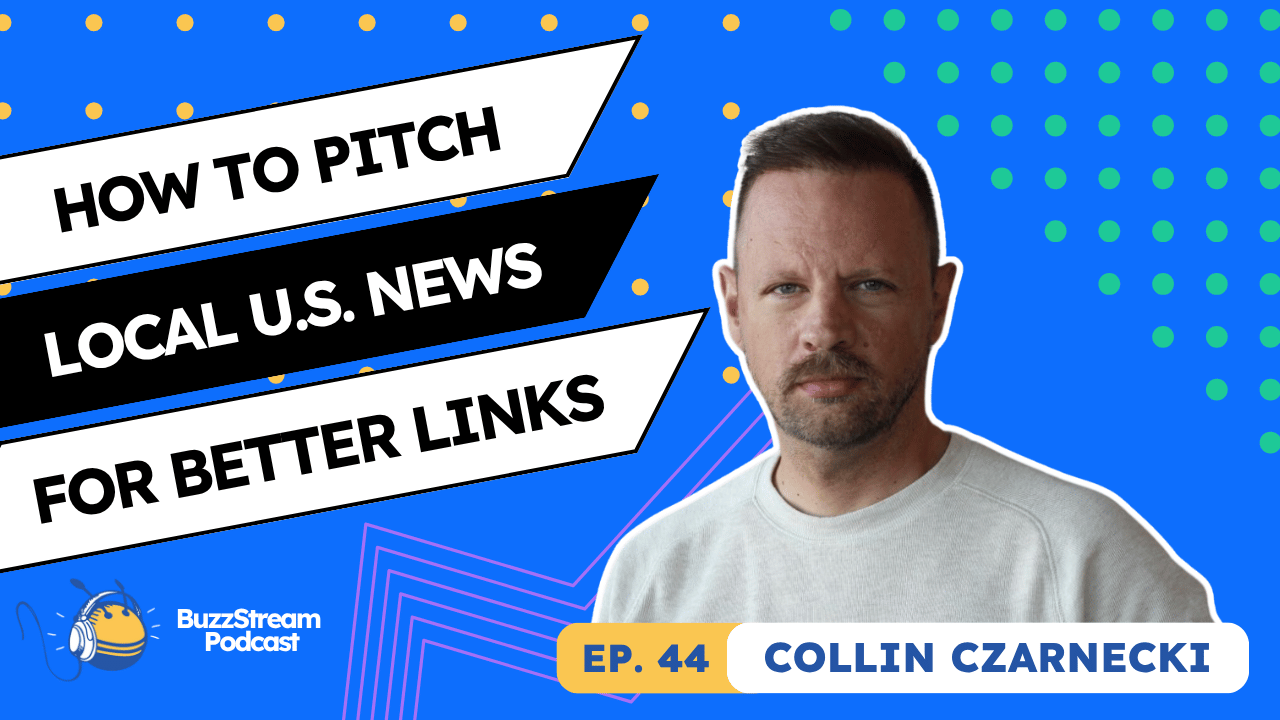
 Check out the BuzzStream Podcast
Check out the BuzzStream Podcast

